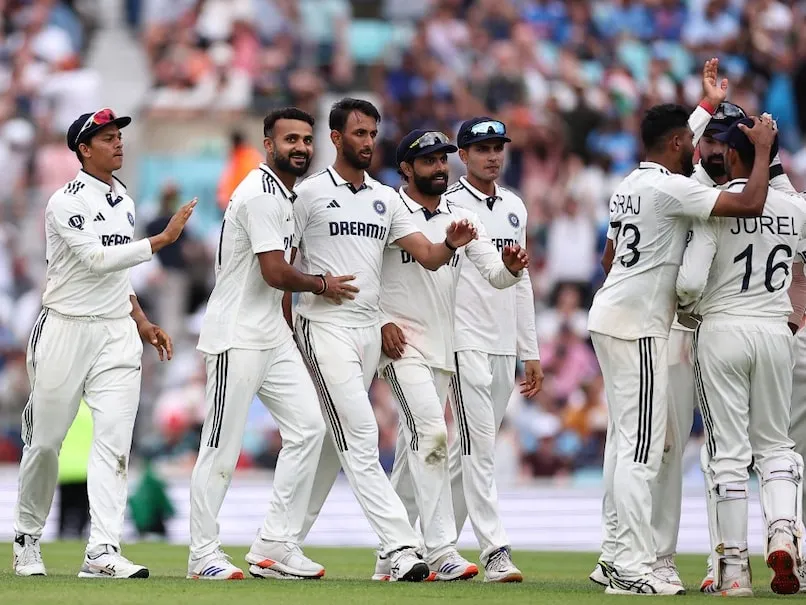
In one of the most astonishing climaxes in Test cricket history, India defeated England by just six runs at The Oval to level the five-match series 2–2. The win came despite England needing only 35 runs on the final day with four wickets in hand, setting the stage for what looked like a straightforward finish. But a stunning collapse orchestrated by Mohammed Siraj saw England bowled out for 367, just seven runs short of their 374-run target.
The match had already swung wildly through its first four days, but no one could have predicted the final act. England resumed on 301 for 6 on the fifth morning, chasing 374, with overnight batters Jamie Smith and Gus Atkinson expected to calmly steer them home. However, what followed was a chaotic unraveling under pressure.
Mohammed Siraj emerged as India’s match-winner, producing a devastating five-wicket haul, including the final three wickets in a nervy morning session. His spell was precise, aggressive, and unwavering, as he dismantled the lower order with sharp deliveries and clever variations. He finished with figures of 5 for 104, cementing one of the most clutch performances of his career.
England’s collapse began with the wicket of Smith, who edged to slip while trying to guide a rising delivery. That opened the floodgates. Atkinson, who briefly threatened with a six over midwicket, was bowled by a lethal Siraj yorker with just seven runs needed. The final man in was Chris Woakes, who astonishingly came out to bat with a dislocated shoulder and his arm in a sling. Despite his brave gesture, he never faced a ball as India wrapped up the final wicket before Woakes could contribute.
The match was a fitting end to a see-saw series that saw both teams dominate at different times. England’s fourth-innings chase was initially powered by centuries from Joe Root (105) and Harry Brook (111), whose 172-run partnership on Day 4 had seemed to break the back of the chase. But their dismissals exposed a fragile tail, and India capitalized ruthlessly.
Siraj’s performance was even more admirable considering he had dropped a crucial catch of Harry Brook on the previous day, an error that could have been costly. Rather than crumbling under pressure, he responded with grit and fire, showing leadership and composure at the most critical juncture.
India’s bowlers were ably supported by Prasidh Krishna, who took four wickets and bowled with discipline throughout the innings. Jasprit Bumrah also applied pressure from the other end, allowing Siraj to attack more freely.
In India’s second innings, Yashasvi Jaiswal’s fluent 118 had laid the platform, while nightwatchman Akash Deep contributed a surprising 66—one of the most valuable innings in the match given how close the final result was. These performances had pushed India’s second-innings total to 387, setting a target that seemed just out of England’s reach—but only just.
This win not only helped India avoid a series loss but also reignited the debate about the enduring value and excitement of Test cricket. The tension, drama, and unpredictability on display were a stark reminder that the longest format still produces moments of unmatched theatre.
For England, the loss will sting deeply. From a position of dominance, they allowed the pressure to creep in, and failed to close out a match that was firmly in their hands. Their middle order did its part, but the tail’s collapse under pressure highlighted once again the critical role of mental toughness in crunch moments.
The final verdict: India’s 6-run victory is a statement of their resilience, bowling depth, and fighting spirit. In a series that fluctuated like a pendulum, the finale brought closure in the most dramatic way possible—etched into memory as one of India’s most thrilling overseas wins in modern cricket.

